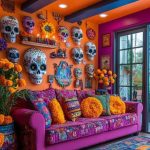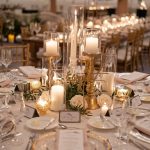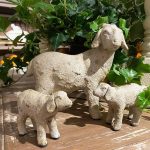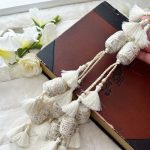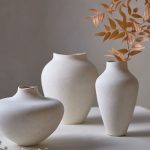History and Significance of Day of the Dead
The Day of the Dead holds deep roots in cultural history. This tradition blends indigenous Mesoamerican rituals with European influences, particularly from Spanish conquistadors. The festival honors deceased loved ones and celebrates their memories.

Origins of the Festival
The origins of the Day of the Dead date back thousands of years to Aztec and other pre-Hispanic civilizations. These groups held the belief that death was a natural phase in life’s continuum. The living and the dead could communicate during special times. The Spaniards brought Catholicism, which merged with indigenous practices to create the modern Day of the Dead celebrations.
Symbolic Meanings of the Celebrations
Each element in the Day of the Dead celebrations carries symbolic meaning. Families create altars to honor the deceased with items they enjoyed in life. Marigolds guide spirits with their vibrant color and scent. Papel picado, or perforated paper, represents the wind and the fragility of life. Offerings of food, photos, candles, and decorations of the day of the dead create a welcoming environment for the spirits. These traditions remind us of the cyclical nature of existence and the importance of remembering the past.
Traditional Day of the Dead Decorations
The Day of the Dead is not just a time for remembrance, but also for celebration through vibrant decorations of the day of the dead. Such decor is not only eye-catching but steeped in deep tradition and symbolism, each with significance rooted in history.
Altars (Ofrendas)
Central to the festivities are the altars, or ofrendas, which families construct with love and care. These are not just mere displays; they serve as a bridge between the living and the deceased, inviting spirits back to the realm of the living for a brief visit. Typically, an ofrenda will feature photographs, favorite foods, and personal belongings of the loved ones being honored.
Marigolds and Their Importance
No Day of the Dead altar is complete without the presence of marigolds. These bright orange blossoms are not only a feast for the eyes but also believed to guide spirits with their alluring scent and vivacious color. Known as ‘cempasúchil’, marigolds are the traditional flower used to create paths that lead the spirits from the cemetery to their families’ homes.
Papel Picado and its Craftsmanship
Another key element in Day of the Dead decor is papel picado, meticulously crafted banners made of colorful tissue paper. These delicate works of art are often hung above altars and around the home. They are not mere decorations; they are the breath of life, moving with the wind and reminding us of the transient nature of our existence on earth. The intricate designs often include skeletons and other motifs associated with the Day of the Dead.
DIY Decor Ideas for Day of the Dead
Creating personalized decorations of the day of the dead can be a meaningful and fun activity. With a few materials and some creativity, anyone can bring the spirit of this tradition into their home.
Creating a Personal Altar
To start your DIY projects, consider making a personal altar or ‘ofrenda’. Gather photos of loved ones, candles, and flowers, particularly marigolds. Arrange these items on a table or shelf to honor family or friends who have passed. You can also add small mementos they cherished in life to create a truly personal touch.
Handmade Papel Picado Techniques
Papel picado is a traditional craft that you can easily do at home. Using colorful tissue paper, fold and cut out intricate patterns. Skeletons and floral designs are popular themes. String your finished pieces together to make a vibrant garland to hang above your altar or in your living space.
Crafting Sugar Skulls at Home
Sugar skulls are a fun and iconic craft for the Day of the Dead. Mix sugar, water, and meringue powder to mold the skulls, then decorate with icing, foil, and sequins. Not only do these make for playful altar decorations, but they can also be a kid-friendly crafting activity.
Incorporating Modern Elements into Traditional Decor
Embracing the Day of the Dead tradition doesn’t mean you can’t add modern flair to your decorations. Injecting contemporary elements can refresh and personalize the experience while keeping the essence of the celebration intact. Let’s explore how modern trends can blend with age-old customs.
Using LED Lights
LED lights offer a bright, energy-efficient way to enhance your Day of the Dead decor. Intertwine them with marigolds around your altar for a magical glow. Choose colors like purple, orange, or pink to stick with the festive theme. They can outline papel picado banners, casting shadows that dance like spirits in the wind. For sugar skulls, place small LED lights inside to create luminous centerpieces that capture everyone’s attention.
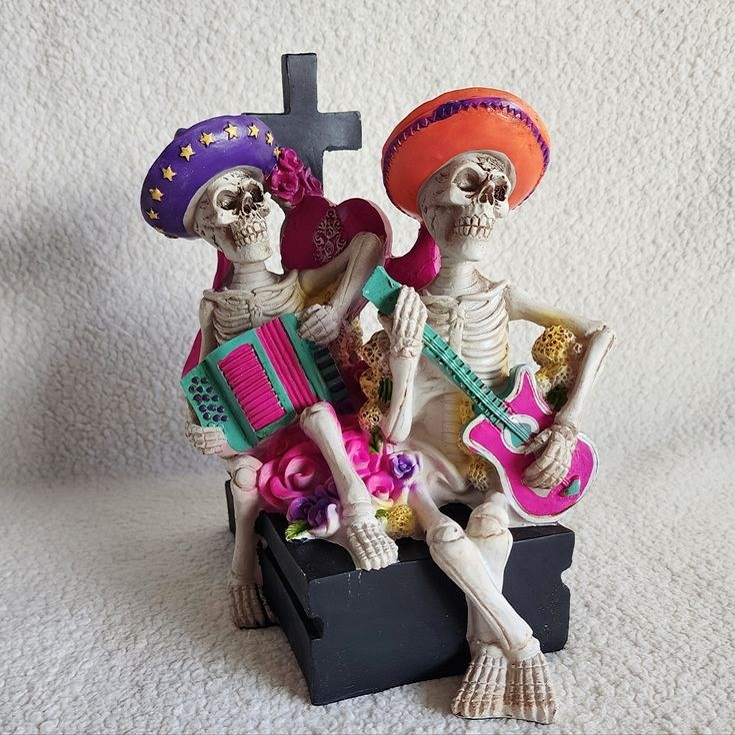 Contemporary Artistic Influences
Contemporary Artistic Influences
Artists worldwide are reinterpreting Day of the Dead motifs in creative ways. You can incorporate their prints and artwork into your decorations for a modern twist. Look for pieces that reflect the vibrant spirit of the day but with a fresh perspective. Adding these to your space can spark conversations about the evolving nature of cultural expression. Whether through abstract interpretations of skulls or stylized renditions of marigolds, contemporary art can sit beautifully alongside traditional decorations of the day of the dead.
Planning a Day of the Dead Themed Event
When planning a Day of the Dead themed event, consider both authenticity and festive spirits. The goal is to craft a respectful and joyous atmosphere that welcomes all guests into the heart of this meaningful celebration.
Decoration Checklist
For an authentic Day of the Dead event, you’ll need a variety of decorations that evoke the essence of the holiday:
- Altars or ofrendas are a must. Dedicate an area for guests to set up photos of passed loved ones.
- Marigolds should be abundant. String together garlands or arrange blooms around spaces where guests will gather.
- Papel picado banners add a colorful touch. Hang them from ceilings or drape across walls.
- Sugar skulls can serve as both decor and party favors. Place them around the venue for playful and vibrant accents.
- Candles are essential. They add warmth and guide spirits. Scatter them safely around your space.
Food and Beverage Ideas
Serve traditional Mexican cuisine to honor the Day of the Dead:
- Pan de muerto (bread of the dead) is a sweet and symbolic treat.
- Skull-shaped sweets mimic the sugar skulls in edible form.
- Tamales offer a hearty and traditional option for guests.
- Atole, a warm and thick drink, is a comforting choice.
Remember to cater to a variety of tastes and dietary restrictions to ensure all guests can enjoy the feast.
Music and Dance Suggestions
Music and dance breathe life into any Day of the Dead celebration:
- Create a playlist featuring mariachi bands for an authentic ambiance.
- Select traditional folk songs that guests can dance to, like ‘La Cucaracha’ or ‘Jarabe Tapatio’.
- Invite local dance groups to perform traditional dances such as the Jarabe Mixteco.
Shopping Guide for Day of the Dead Decorations
Preparing your celebration with appropriate decorations of the day of the dead can enrich the festive atmosphere. Knowing where to shop for authentic and quality items is essential. This guide will help you select the best decor while being mindful of authenticity and tradition.
Best Online Stores for Authentic Items
For genuine Day of the Dead items, look for stores that specialize in Mexican crafts. Check out online marketplaces for artisanal products. Look for shops with positive reviews and a history of selling cultural merchandise. Online stores that work directly with Mexican artisans are preferred to ensure authenticity.
Etsy is a go-to for handmade decor. Search for sellers with a focus on Day of the Dead crafts. Amazon may also have a range of items, but be sure to read seller profiles and reviews. Specialty online stores that source directly from Mexico offer items like traditional papel picado and hand-painted skulls.
Choosing Sustainable and Ethical Decor
Sustainability is key. Opt for decor made from biodegradable or recycled materials. Avoid plastic when possible. Ethical shopping means supporting craftsmen fairly paid for their work. Look for fair trade certifications or stores committed to ethical practices. Investing in quality pieces not only respects the artisans but also the environment. By following these guidelines, you can honor the Day of the Dead with a conscious approach to your celebration decor.
 Preservation of Culture Through Decor
Preservation of Culture Through Decor
Using decorations of the day of the dead helps preserve a rich cultural heritage. Every decor item tells a story, linking the past to the present. By decorating, people engage with traditions and keep them alive for future generations.
Educational Aspects of Day of the Dead
The Day of the Dead serves as a learning experience. It teaches about life’s cycle and cultural history. Through decorations, storytelling unfolds. For example, sugar skulls teach about artistic expression and the acceptance of mortality. Altars, or ofrendas, showcase the remembrance of ancestors. They teach the values of family and memory. Children learn from the colors, scents, and symbols that makeup decorations of the day of the dead.
Ways to Involve Younger Generations
Involving kids and teens in decorating can spark an interest in cultural traditions. Craft sessions create sugar skulls and papel picado can be fun and educational. Encourage them to ask questions and share stories about loved ones. Schools can also host Day of the Dead workshops. Here, students can engage with decoration making and learn about the festival’s significance. By involving younger people, the Day of the Dead remains a vibrant, living tradition that honors the past while looking to the future.
